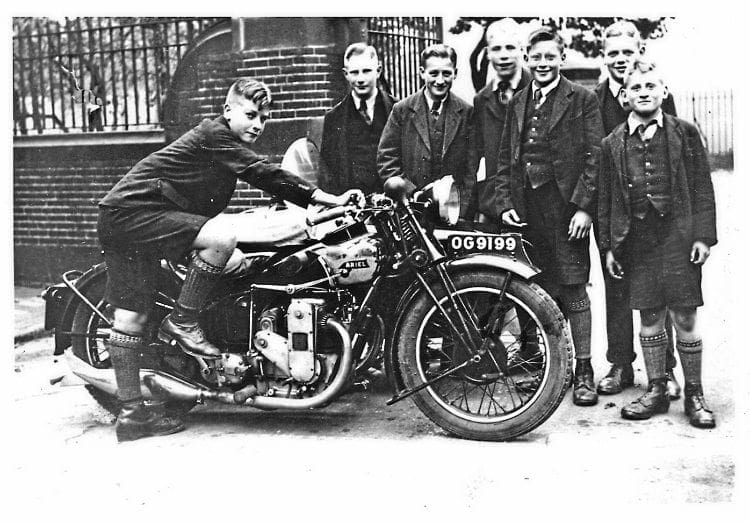While little cannot already have been written about the Ariel Square Four, it takes only a brief look through the Mortons Archive to reignite the intrigue this distinguished British design has always generated, writes Pete Kelly.
To say that the public unveiling of the overhead-camshaft 500cc Ariel Square Four in the autumn of 1930 caused a sensation would be a considerable understatement.

At a time still associated with soup kitchen queues, the Ariel’s appearance at the 1930 Olympia Motorcycle Show even out-posed the introduction of the Matchless Silver Hawk, and four giants of the British motorcycle industry – Edward Turner, Jack Sangster, Val Page and Bert Hopwood – each played a part in the story.
The brainchild of Edward Turner in the late 1920s, the Square Four’s engine had two crankshafts rotating in opposite directions through geared central flywheels. Valves were operated by a single chain-driven camshaft across the top of the head, the valves being opened by rocker arms riding on the cam.
With the gears meshed correctly, the crankpins of one shaft would be at top and bottom dead centre while those of the other would be at bottom and top dead centre. With two diagonally opposite pistons at TDC and the others at BDC, this was the perfect recipe for smoothness.
After touting his design around various manufacturers including BSA, Turner was finally engaged by Ariel’s Jack Sangster and worked with Bert Hopwood (then a junior draughtsman) under the legendary Val Page.
The very first Ariel Square Four road test appeared in the April 9, 1931 issue of The Motor Cycle, and not surprisingly the newcomer was greeted with great enthusiasm. “Becoming critical through experience, it is not often that the staff of The Motor Cycle can apply superlatives to almost every feature of a particular motor cycle,” wrote the lucky test rider. “The machine may, for instance, hold the road well, it may have magnificent acceleration or a high maximum speed, it may be an easy starter, it may be extremely pleasant to handle, or it may perhaps be quiet and smooth in its running.
“But when a machine combines every one of these features, it is time to say so in no uncertain voice. Such a machine was the ‘Square Four’ Ariel that has been tested – one of the first actual production models – and no apologies need be made for
showing enthusiasm.”
Test highlights of the £75 10s (fully equipped but without horn!) model were its ability to start, once warmed up, with a gentle depression of the kick-starter by hand; its near-silent tick-over; its ability to pull away smoothly from a standstill in second gear, or, having been throttled down to six or seven mph in top (third) to accelerate from there to an indicated 75mph, and its fuel consumption of 64mpg at a steady 50mph.
In a 28-year production run lasting until 1959, the Square Four went through several metamorphoses. The original 500cc 4F was enlarged to 600cc in 1932, and the pushrod-operated 1000cc 4G was launched in 1936.
In 1949, the 1000cc Mk.1 appeared with an all-alloy cylinder block and head replacing the 4G’s heavy cast iron engine, with resultant improvements in handling and acceleration; and finally, in 1953, the 1000cc four-pipe Mk.2 was the final Squariel model to be built, lasting until 1959.
Next month we’ll take a deeper look at the history of the Ariel Square Four through the successive road tests of all models, and also tell the story of the Healey 1000/4 (1971-7) which, with its much improved Square Four engine, was actually cheaper than a Honda Gold Wing, although fewer than 30 were ever built.





